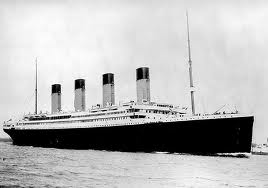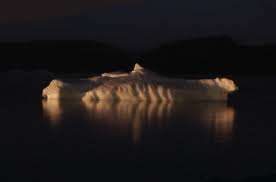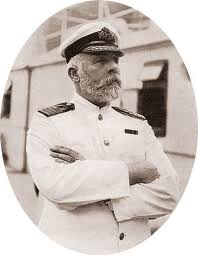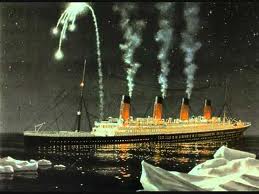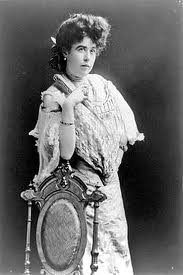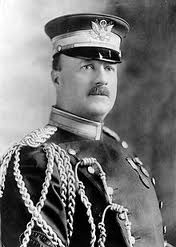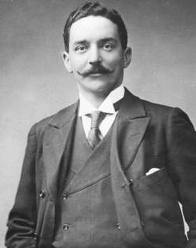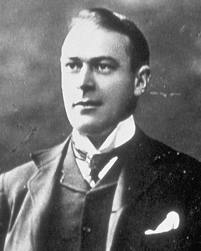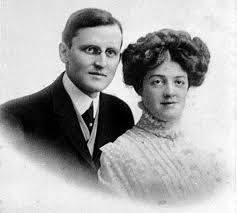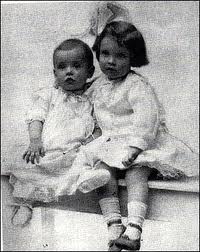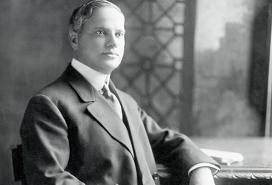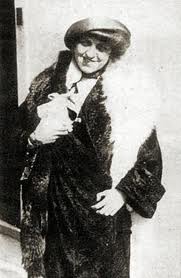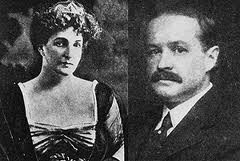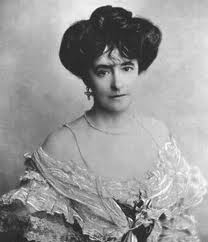Sunday, April 14, 1912 was coming to an end on the Titanic when tragedy struck. That morning passengers attended church services with Captain Smith officiating the First Class sermon. In the evening some first and second class passengers had a hymn sing. A lifeboat drill had been planned for that Sunday morning, but was cancelled for [now] unknown reasons.
Titanic was the largest ship in the world, beating her sister ship, Olympic by one hundred feet. She had the largest engines ever on a ship and was able to generate more steam than any ship. She had the capability of carrying 3,547 people. There were 2,223 people aboard preparing to sleep for the night and the majority of them were not worried. {There were a small handful that testified to premonitions and at least one passenger refused to sleep during at night.} These crew members and passengers had every confidence in the vessel on which they were sailing.
Throughout the day Titanic received a number of ice warnings. The first two were acknowledged by Captain Smith. He’d even ordered a new course, farther south, after receiving a report from RMS Caronia at nine o’clock that morning and RMS Baltic at 1:42pm. That afternoon there were problems with the Marconi wireless equipment. The operators Jack Phillips and Harold Bride spend over six hours that afternoon repairing the faulty machinery.  The company that owned the equipment suggested operators wait until they returned to port and allow company technicians to fix the faulty equipment. If Phillips and Bride had followed company protocol, most likely no help signals would have been able to be sent out after the disaster occurred. No one would have known the Titanic needed help and very possibly everyone aboard would have perished.
The company that owned the equipment suggested operators wait until they returned to port and allow company technicians to fix the faulty equipment. If Phillips and Bride had followed company protocol, most likely no help signals would have been able to be sent out after the disaster occurred. No one would have known the Titanic needed help and very possibly everyone aboard would have perished.
Ice conditions were the worst they’d been in the last fifty years. With no moon and a calm sea, Captain Smith and his crew had a false sense of safety. Archibald Gracie testified “the sea was like glass, so smooth that the stars were clearly reflected”. The ice conditions were attributed to a mild winter which caused a large number of icebergs to break away from the coast of Greenland. Research now shows that the high tides were due to the fact that in January of that year the moon had moved closer to earth than any time in the past fourteen hundred years. There were at least four other ice warnings that did not reach Captain Smith that day. A final message received from Californian at 10:30pm and Phillips replied “Shut up! Shut up! I’m working Cape Race.”
Unaware of the additional ice warnings, the ship did not reduce speed and was running at twenty-two knots {approximately twenty-five miles per hour}. These vessels were constantly driven at close to their full speed, treating hazard warnings as advisories rather than calls to action. It was widely believed that ice posed little risk; near misses were not uncommon, and even head-on collisions had not been disastrous. Harold Lowe testified that standard maritime practice was “to go ahead and depend upon the lookouts in the crow’s nest and the watch on the bridge to pick up the ice in time to avoid hitting it.” Captain Smith even declared this in a 1907 interview where he said “imagine any condition which would cause a ship to founder. Modern shipbuilding has gone beyond that.”
Frederick Fleet and Reginald Lee were the lookouts in the crow nest having gone on duty at ten o’clock that evening. The men had no binoculars with them on this maiden voyage. Fleet spotted the iceberg at 11:39pm. He immediately rang the bell and told Sixth Officer James Moody “iceberg right ahead”. Moody attempted to turn the ship to port {left}. Testimony showed that Moody told Captain Smith he was trying to swing the bow around the iceberg. The engines could not be immediately reversed and it took time to reverse the engines and tillers which resulted in a delay. Had the ship been turned while maintaining full speed the iceberg would most likely have been missed with feet to spare. Less than a minute after spotting the iceberg, the ship collided with the object.
The iceberg was only about two hundred feet above the surface but below the surface it is believed the object went down an additional one thousand feet. The underwater ice scraped the starboard {right} side of the ship for about seven seconds causing chunks of ice to fall onto the deck. The engines stopped minutes later, but the damage was already done as the iceberg buckled the plates and popped the rivets. Boiler room number six soon filled with icy water. The engineers and stokers worked fervently to keep the boilers from exploding from the hot pressure of the steam. The stokers and firemen were ordered to draw down the fire and vent the boilers. Thomas Andrews, the designer, had built Titanic to stay afloat with four of her sixteen bulkheads flooded. Each bulkhead was separated by a watertight door, which was immediately closed as water began to seep into the vessel. Water soon spilled over from one bulkhead into the next. One historian said “There has only been one iceberg, and its history lasted for a minute”.
Many passengers felt a bump or shudder but did not know what it was. Captain Smith felt the collision in his cabin, after going to the deck and being told of the situation he summoned Thomas Andrews. 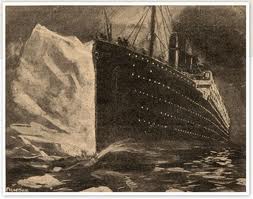 An inspection showed that five of her bulkheads were now flooded and Thomas Andrews had the unfortunate job of explaining to Captain Smith that Titanic would indeed flounder within the next hour to ninety minutes. By this time water was pouring in fifteen times faster than she could be pumped out. In the first half hour of impact the ship angled at a 4.5 degree angle, but then slowed down to a five degree angle over the next hour, which gave many aboard a false hope. Both men knew there were not enough boats to save the 892 crew members and 1,320 passengers onboard.
An inspection showed that five of her bulkheads were now flooded and Thomas Andrews had the unfortunate job of explaining to Captain Smith that Titanic would indeed flounder within the next hour to ninety minutes. By this time water was pouring in fifteen times faster than she could be pumped out. In the first half hour of impact the ship angled at a 4.5 degree angle, but then slowed down to a five degree angle over the next hour, which gave many aboard a false hope. Both men knew there were not enough boats to save the 892 crew members and 1,320 passengers onboard.
Captain Smith ordered the lifeboats to be lowered at five minutes after midnight. {Time was shipboard time. Testimony shows they were about two hours ahead of Eastern Standard Time}. The Captain also told Phillips and Bride to send distress calls out over the wireless. The mail sorters began moving mail up to the top deck in an effort to save the correspondence. Stewards began moving from door to door to rouse the sleeping passengers. At first many of the passengers and stewards were reluctant to comply, not wanting to believe there was a problem and longing to remain in their warm rooms. At fifteen minutes after midnight stewards began ordering passengers to put on their lifebelts. Due to the sound of the high pressure steam moving from the boilers through the funnels, most on deck found it difficult to hear and had to use hand signals to communicate. Captain Smith was in shock and Officer Lightoller asked if “women and children first” should be loaded into the lifeboats. When the Captain nodded in affirmation Lightoller took charge on the port side and Murdoch took charge on the starboard side. The two officers interpreted the orders completely differently. Lightoller thought it meant women and children only and lowered lifeboats with empty seats if not women or children were around. Murdoch believed the orders meant women and children first and allowed men to board the lifeboats if no women or children were around.
The lifeboats were able to hold about sixty-eight people, but the first lifeboat to leave only had twenty-eight people aboard. Titanic was designed to accommodate sixty-eight lifeboats but only had sixteen wooden and four collapsible boats onboard. These boats were intended to be used in event of emergency to transfer passengers to another ship and not to clear the entire boat. The majority of passenger ships at that time did not have enough lifeboats for their passengers, however had more than the law required. Due to lack of training the crew was unprepared for such an emergency. All reports seem to show that Captain Smith was in shock. In his long and illustrious career the only collision he’d encountered at sea was when the Olympic collided with the RMS Hawke and was damaged. The band came on deck and began to play music to keep the passengers calm. At first they played upbeat ragtime pieces but most people believe the final song they played was “Nearer, My God, To Thee.”
Passengers were reluctant to load the lifeboats at first. John Jacob Astor declared: “We are safer here than in that little boat.” Rocket flares were sent up as a call for help. The California was nearby but the wireless operator turned his radio off at eleven thirty that evening. First and second class passengers had a better chance of reaching a lifeboat, than third class. This is because United States immigration laws required third class stay quarranted so there was no spread of disease.
By 1:45am the boiler rooms were completely flooded. Lifeboat fifteen was nearly lowered onto another lifeboat. Lifeboat eleven was filled overcapacity. There were not enough seamen to man the boats and other men were allowed to enter to help row. In many of the boats the women helped to man the oars. Panic began to erupt in the last fifteen minutes of the lifeboats being lowered. The severity of the situation was beginning to register with the passengers. Fifth Officer Lowe fired three warning shots to restrain the crowd. The last boat, Collapsible D, was launched at five minutes after two o’clock in the morning with forty-four people onboard. Shortly after this boat left Captain Smith is reported to say “Now it’s every man for himself.”
The Carpathia answered the Titanic’s distress call at 12:25 am. The last CQD message was received by The Virginian at 2:17am. Half an hour earlier RMS Olympic messaged from 500 miles away: “Am lighting up all possible boilers as fast as can”. But it was too late.
At 2:15am the stern began to lift to a thirty five to forty degree angle and water rapidly poured into the ship. Father Thomas Byles was hearing confessions and giving absolutions. Thomas Andrews was last seen in the first-class smoking room, without a lifebelt, staring at the painting above the fireplace. No one knows for sure where Captain Smith was in those final moments, but there reports of seeing him on deck or headed toward the wheelhouse.
Survivors reported hearing a great noise which is now believed to be the boilers exploding. Beesley described it as “partly a groan, partly a rattle, and partly a smash, and it was not a sudden roar as an explosion would be: it went on successively for some seconds, possibly fifteen to twenty”. The stern was now raised to a ninety degree angle as the ship split in two. After another minute, the lights flickered once and then permanently went out, plunging Titanic into darkness. Jack Thayer recalled seeing “groups of the fifteen hundred people still aboard, clinging in clusters or bunches, like swarming bees; only to fall in masses, pairs or singly as the great after part of the ship, two hundred fifty feet of it, rose into the sky.”
Titanic sank at 2:20am. Two hours and twenty minutes after she hit the iceberg. Mrs. Stephenson in lifeboat number 4 stated, “She then gave her final plunge and the air was filled with cries. We rowed back and pulled five more men from the sea. Their suffering from the icy water was intense and two men who had been pulled into the stern afterwards died, but we kept their bodies with us until we reached the Carpathia, where they were taken aboard and Monday (April 15) afternoon given a decent burial with three others.”

Hundreds were plunged into the icy waters, which were reported to be twenty-eight degrees. The cries of those fighting for their lives were horrific. Second Officer Lightoller described the feeling of “a thousand knives” being driven into his body as he entered the sea. Some of those in the water died of immediate heart attacks but many died from hypothermia which can take about twenty minutes on average. The pocket watch recovered from a victim showed the time stopped at 2:28am. As Beesley later wrote, the cries “came as a thunderbolt, unexpected, inconceivable, incredible. No one in any of the boats standing off a few hundred yards away can have escaped the paralyzing shock of knowing that so short a distance away a tragedy, unbelievable in its magnitude, was being enacted, which we, helpless, could in no way avert or diminish.” “The sounds of people drowning is something that I cannot describe to you and neither can anyone else. It is the most dreadful sound and their is a terrible silence that follows it.”, described Eva Hart years later.
Only a few in the water survived by swimming to collapsible Boat B. Second Officer Charles Lightoller, wireless operator Harold Bride, chief baker Charles Joughin and Archibald Gracie finally found their way onto the keel of the collapsible. Jack Phillips also made it onto this collapsible but he did not survive the night. After twenty minutes the cries subsided as death overtook those in the water and there was a long silence. Lady Lucy Duff-Gordon recalled after the disaster a man cried in a dull, monotonous and helpless way. She said that “the very last cry was that of a man who had been calling loudly: “My God! My God!”

Another survivor would remember the “People were screaming and screaming and then the silence was terrible.”
After the yells and shrieks subsided Fifth Officer Lowe mounted the solo rescue attempt to help those in the water. The tied five lifeboats together, transferred the occupants and took eight men to help him find survivors. Only a few voices could still be heard. Five people were rescued from the water. Survivor Ida Hippach said “the water was very still and the sky had many stars! You can’t think how it felt out there all alone by ourselves in the Atlantic. And there were so many shooting stars I never saw so many in my life. You know they say when you see a shooting star someone is dying. We thought of that, for there were so many dying, not far from us.”

Most of the lifeboats were not properly stocked with emergency provisions. Only one had a lantern. As dawn approached the wind rose and the sea became increasingly choppy. The only thing survivors could do now was to wait and wonder if they would be rescued. Second Office Charles Lightoller and wireless operator Harold Bride were the only ones aware that help was on the way. Carpathia was headed in their direction. Can you imagine being in that life boats, having just experienced this terrible tragedy? Now you are waiting, but you’re not sure what you are waiting for. What would you be waiting for?
